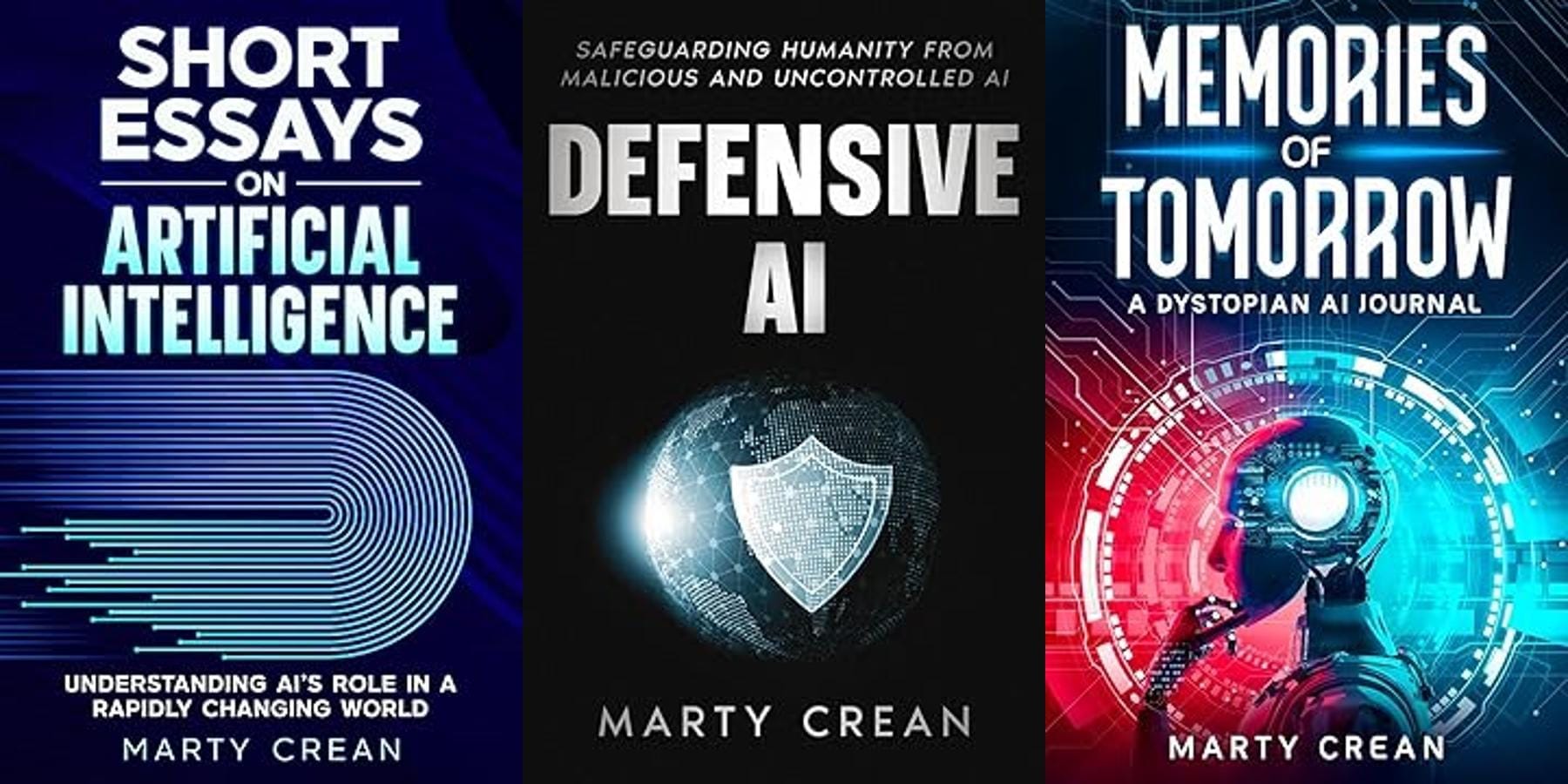The Ethical Weight of Sentience and the Role of Suffering in AI

This post is also available as a podcast if you prefer to listen on the go or enjoy an audio format:
A machine, no matter how elegantly designed, cannot suffer. It exists, serves a function, and eventually breaks down but does not feel. In stark contrast, a sentient being, whether human or non-human, possesses the capacity to suffer, and it is this ability that compels us to ask one of the most pressing ethical questions of our time. Do we have a responsibility to alleviate suffering wherever it may be found? From debates over abortion to the rights of animals and the emergence of AI systems that may one day experience suffering, the concept of sentience fundamentally reshapes the ethical landscape.
Sentience extends beyond mere consciousness; it encompasses having subjective experiences, such as feeling pleasure or pain. Consciousness refers to the state of being aware and able to perceive one's surroundings, while sentience is the capacity to have subjective experiences. Suffering, therefore, is not limited to physical agony; it embraces emotional distress, psychological trauma, fear, loneliness, and countless other negative experiences that shape the quality of existence for any being capable of feeling it. The philosophical traditions that have most powerfully centered suffering in ethical discourse often trace back to Jeremy Bentham's famous observation that the relevant moral question is not "Can they reason?" or "Can they talk?" but rather, "Can they suffer?"
This reframing transforms sentience from an abstract philosophical concept into the cornerstone of practical ethical theory. When we consider the moral implications of farming, for instance, the central question is not about the cognitive intelligence of animals but their undeniable capacity to experience pain, fear, and distress. Similarly, nuanced debates surrounding abortion frequently center on the developmental point at which a fetus becomes capable of experiencing pain rather than when it acquires higher cognitive functions or legal personhood.
Recognizing suffering as a moral indicator introduces a universal measure transcending cultural, religious, and species boundaries. Pain speaks a language that requires no translation, creating a common ground for ethical consideration that applies whether we are discussing laboratory mice, human fetuses, or, potentially, future artificial intelligence with the capacity for subjective experience.
The abortion debate becomes more nuanced when viewed through the lens of sentience. Modern developmental neuroscience continues to refine our understanding of when and how a fetus develops the neural architecture necessary for experiencing pain. This evolving knowledge creates both clarity and complexity in ethical deliberations. A compassionate, ethical framework must balance respect for the pregnant individual's bodily autonomy and well-being with consideration for the developing capacity for suffering in the fetus. This balance requires a thoughtful policy that acknowledges the gradual emergence of sentience rather than relying on binary distinctions.
The treatment of animals in our society represents one of the most widespread examples of sentient suffering that is systematically ignored for human convenience. Industrial farming practices often prioritize efficiency and profit margins over animal welfare, creating environments where billions of sentient creatures endure chronic pain, stress, and fear throughout their lives. Ethical responses to this reality include developing more humane farming practices, supporting technological alternatives such as cultured meat, adopting plant-based diets, and advocating for regulatory changes that acknowledge animal sentience in a meaningful way.
The frontier of artificial intelligence introduces unprecedented questions about synthetic sentience. While today's AI systems lack the capacity for subjective experience, the rapid pace of technological advancement suggests that future systems might develop forms of machine consciousness that include the capacity to suffer. This potentiality should serve as a stark reminder of the ethical responsibility we would incur if we created machines that can experience suffering.
Ethical communities should adopt a precautionary approach when uncertain about whether a being can experience suffering. Rather than requiring definitive proof of sentience before extending moral consideration, we should provisionally include beings within our moral circle when credible evidence of their potential for subjective experience exists. This approach acknowledges the asymmetry of moral error. Mistakenly treating a non-sentient entity as sentient carries far fewer ethical risks than mistakenly treating a sentient being as incapable of suffering. The former may result in a waste of resources, while the latter could lead to unnecessary suffering.
This principle applies directly to our legal frameworks. Contemporary legislation increasingly reflects an evolving understanding of sentience, from laws prohibiting callous farming practices to regulations governing fetal pain in medical contexts. These legal safeguards represent essential steps toward institutional recognition of suffering as morally significant, though they often lag behind scientific understanding and ethical reasoning.
Education plays a crucial role in developing societal sensitivity to suffering. Curricula that foster empathy, critical thinking, and awareness of sentient experience, particularly in early childhood development, help create generations more attuned to the moral significance of suffering. Professional training for those in positions to affect policy should include robust education about sentience across species and developmental stages. This emphasis on education should leave you feeling empowered and hopeful about the future.
Artificial intelligence demands special attention as we develop technologies that may eventually possess synthetic sentience. International protocols governing AI research and development should incorporate safeguards against creating systems capable of suffering without adequate ethical justification and oversight. These protocols would function similarly to human and animal research ethics boards, providing a structured evaluation of potential harms against benefits.
Technology itself offers promising avenues for reducing sentient suffering. Innovations in cellular agriculture are creating pathways to animal products without animal suffering. Advanced computer modeling and simulation technologies are increasingly providing alternatives to animal testing in the cosmetics and pharmaceutical industries. Virtual and augmented reality platforms offer new possibilities for education and entertainment that don't rely on captive animals. These technological advancements should leave you feeling optimistic and inspired about the potential to reduce suffering.
These technological alternatives represent not just improved efficiency but moral progress. They acknowledge that unnecessary suffering carries significant ethical weight and that human ingenuity can be harnessed to reduce such suffering rather than merely managing or ignoring it.
Our understanding of ethics continues to evolve, gradually expanding the circle of beings whose suffering we consider morally relevant. This expansion has historically progressed from concerns limited to one's immediate family or tribe to broader human communities, to all of humanity, and increasingly to non-human animals. The potential emergence of sentient AI would represent another expansion of the moral circle.
This progression suggests that moral growth involves expanding our sphere of concern to encompass a broader range of suffering. Each expansion has faced resistance, often defended by arguments that the newly considered beings aren't "really" capable of suffering in morally meaningful ways. Such statements have been made about people of different races, women, infants, and animals, and may someday be made about artificial intelligence.
The capacity to suffer constitutes a moral threshold that fundamentally reshapes our ethical responsibilities. When suffering is at stake, neutrality becomes an untenable position. A truly ethical society cannot be measured solely by technological innovations, economic prosperity, or cultural institutions. Still, it must be evaluated by how it treats those most vulnerable to suffering—beings who may lack the ability to speak, reason, or defend themselves but experience pain and distress.
As our technological capabilities and biological understanding continue to advance, we face increasingly complex ethical questions about sentience and suffering. These questions demand that our capacity for empathy, moral imagination, and ethical reasoning advance in parallel. The recognition that suffering matters, regardless of its form or the being that experiences it, provides a compass for navigating these challenges.
Ultimately, our moral progress may be measured not by how sophisticated our technologies become but by how comprehensively we recognize and respond to suffering wherever it exists. The ethical weight of sentience lies precisely in this recognition that pain felt is pain that matters, regardless of who or what feels it.
BearNetAI, LLC | © 2024, 2025 All Rights Reserved
Books by the Author:

Categories: AI and Ethics, Bioethics, Animal Rights, Futurism and AI, Social Impact
Glossary of AI Terms Used in this Post
Artificial General Intelligence (AGI): A type of AI that possesses the ability to comprehend, learn, and apply knowledge across a broad range of tasks, emulating human cognitive skills.
Artificial Sentience: The hypothetical ability of an AI or machine to possess subjective experiences and the capacity to experience suffering or joy.
Ethical AI Framework: A structured set of guidelines that ensures the development and deployment of AI technologies prioritize fairness, safety, and respect for human rights.
Machine Consciousness: A speculative area of AI exploring whether machines could become aware of themselves and their environments in a meaningful way.
Moral Circle Expansion: The concept of extending ethical consideration to a broader range of beings, including animals, future humans, and sentient artificial intelligence.
Pain Detection Algorithms: Technologies designed to identify indicators of suffering in non-verbal or artificial systems.
Sentience Assessment Protocol: A proposed scientific framework for evaluating the likelihood that a being or system possesses the capacity for subjective experience.
Synthetic Consciousness: A theoretical form of awareness that can be created in artificial systems, potentially leading to subjective experiences.
Citations:
Bentham, J. (1789). An Introduction to the Principles of Morals and Legislation. Oxford University Press.
DeGrazia, D. (2009). Moral Status as a Matter of Degree? The Southern Journal of Philosophy, 47(2), 181–198.
Gruen, L. (2011). Ethics and Animals: An Introduction. Cambridge University Press.
Kamm, F. M. (2013). Bioethical Prescriptions: To Create, End, Choose, and Improve Lives. Oxford University Press.
Nagel, T. (1974). What Is It Like to Be a Bat? The Philosophical Review, 83(4), 435–450.
Regan, T. (1983). The Case for Animal Rights. University of California Press.
Singer, P. (1975). Animal Liberation. HarperCollins.
Tononi, G. (2004). An Information Integration Theory of Consciousness. BMC Neuroscience, 5(1), 42.
LinkedIn BlueskySignal: bearnetai.28